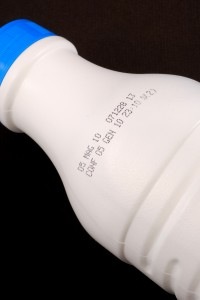 You might be used to looking for expiration dates on dairy produces, eggs, and meat. But it seems like just about everything in the supermarket is now stamped with some kind of date.
You might be used to looking for expiration dates on dairy produces, eggs, and meat. But it seems like just about everything in the supermarket is now stamped with some kind of date.
I tend not to like food that wiggles but others in my family get their own selection of Technicolor wiggle food, so I checked a Jello container lurking in my fridge for some kind of date. There it was: Expires by ___. Whoops – been in the fridge a little too long – or has it?
What Do The Dates Mean?
According to Weill Cornell’s Food & Fitness Advisor (2/2011), the descriptive terms refer more to the quality than the safety of the food.
- Sell by date: how long a store can sell a product
- Best if used by date: when the food should be eaten by for the best quality or flavor
- Use by date: the last date to use the product for it to be at its peak quality (a lot of food is still safe to eat after this date)
- Expiration date: There’s no absolute date that guarantees a food is safe before the stamped date – or that the food is playing house to harmful bacteria after the listed date.
Common Sense, Eyes, Nose, And Mouth
If you want to decrease your risk of a food borne disease from food gone “bad,” use common sense, and your senses: sight, taste, and smell.
- Look at it. If you open a container and there’s black or blue green mold even though it doesn’t expire for three weeks – get rid of it.
- Smell it. If it stinks, you might think about doing the same (foods that are supposed to stink – like certain cheeses – require observation other than through the nose!).
- Taste it. If it’s supposed to be okay but tastes foul, toss it. How many times have you poured milk from a not yet expired container only to have it come out in clumps. Or, worse yet, tasted not yet expired milk only to gag and spit?
Bottom line: Use the dates as guides both when shopping and consuming, but use your judgment, too. If you question the safety of the food, toss it.
“When in doubt, throw it out!” Good advice for any food: store bought, take-out, or prepared at home.


